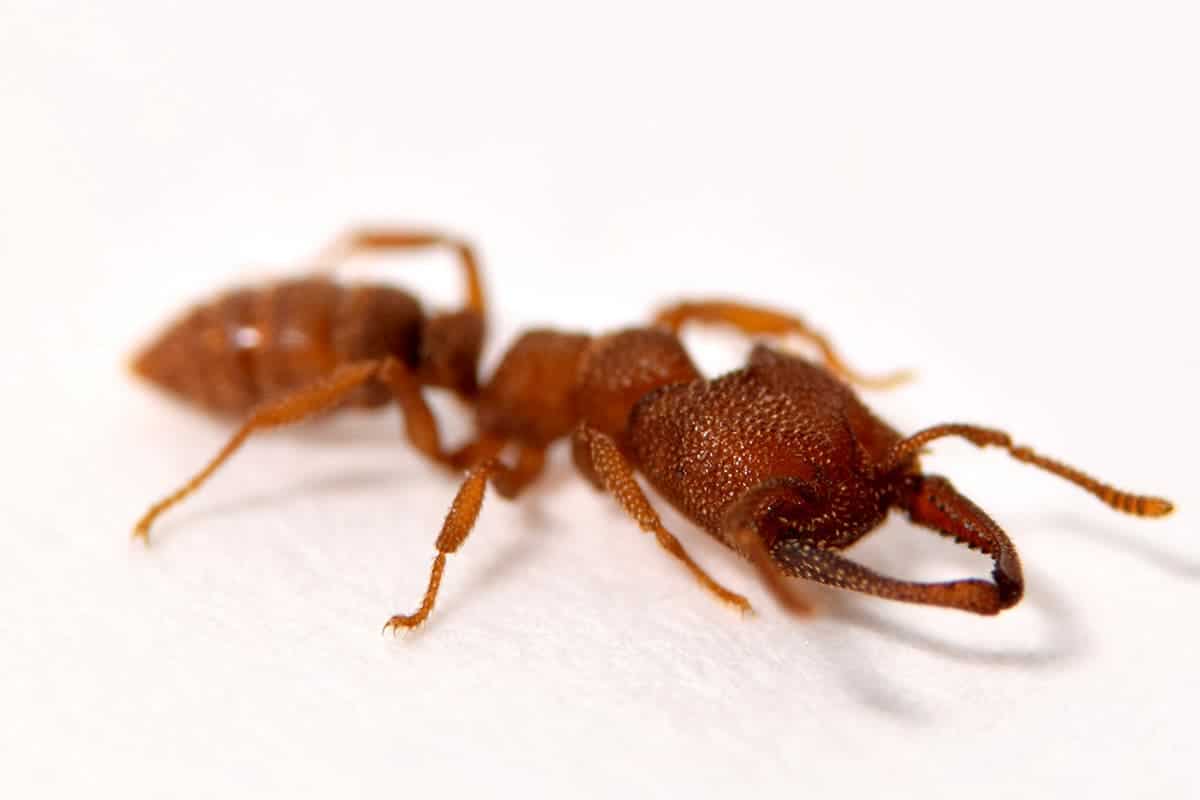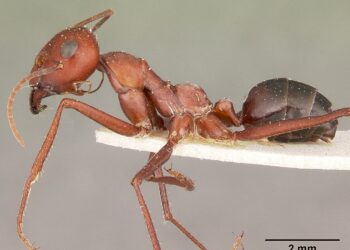A new study has found that their jaws can move at 90 meters per second (more than 200 mph), making it the fastest animal movement on record.

As you might infer from their name, Dracula ants (a generic name for species in the Adetomyrma genus) are pretty nasty creatures. Their name comes not from their jaws, but rather from their extremely unusual feeding habits. They practice a sort of “non-destructive cannibalism”, chewing holes into and feeding on the haemolymph (insect “blood”) of the colony’s own pupae and larvae.
Some species have also been known to drink the haemolymph of prey, and have also been observed to feed off of egg yolk. But these ants are also known for the incredible strength of their mandibles, which they can use both offensively or defensively.
“These ants are fascinating as their mandibles are very unusual,” said University of Illinois animal biology and entomology professor Andrew Suarez, who was one of the co-authors. “Even among ants that power-amplify their jaws, the Dracula ants are unique: Instead of using three different parts for the spring, latch and lever arm, all three are combined in the mandible.”
Not all that much is known about the lifestyle of these ants. They were only discovered a decade ago on a rotting log in Madagascar, and they quite confused researchers at first — because, unlike many other ant species, their looks don’t necessarily betray their role in the colony.
For instance, some workers sometimes become queen ants, which may or may not have wings, and these wings can be large or small. In addition, the genus has three different modes of reproduction, which makes understanding them even more challenging. However, in the new study, researchers didn’t focus on their ecology, but rather on their jaws.
Unlike trap-jaw ants, which have a pair of mandibles capable of shutting their jaws from an open position, Dracula ants power up their mandibles by pressing the tips together. This creates an internal stress that is released when one mandible slides across the other — somewhat similar to how we can snap our fingers, researchers say.
This way, they don’t necessarily bite off their opponents, but rather smack them around violently.
“The ants use this motion to smack other arthropods, likely stunning them, smashing them against a tunnel wall or pushing them away. The prey is then transported back to the nest, where it is fed to the ants’ larvae,” Suarez said. The workers use venom to stun their prey and then bring them back to the colonly to feed it to the larvae.
“Scientists have described many different spring-loading mechanisms in ants, but no one knew the relative speed of each of these mechanisms,” says Fredrick J. Larabee, a postdoctoral researcher at the Smithsonian National Museum of Natural History. “We had to use incredibly fast cameras to see the whole movement. We also used X-ray imaging technology to be able to see their anatomy in three dimensions, to better understand how the movement works.”
After they carried out computer simulations of mandible snaps from different species, researchers better understood just how the ants are capable of generating so much power and speed in their jaws. According to their results, these are the fastest-moving appendages in the animal world.
“Our main findings are that snap-jaws are the fastest of the spring-loaded ant mouthparts, and the fastest currently known animal movement,” Larabee said. “By comparing the jaw shape of snapping ants with biting ants, we also learned that it only took small changes in shape for the jaws to evolve a new function: acting as a spring.”
However, it’s still not clear how all these mandibles are used in practical situations. Researchers want to better examine how Adetomyrma employs this power in offensive and defensive situations.
The paper “Snap-jaw morphology is specialized for high-speed power amplification in the Dracula ant, Mystrium camillae” has been published in Royal Society Open Science.






